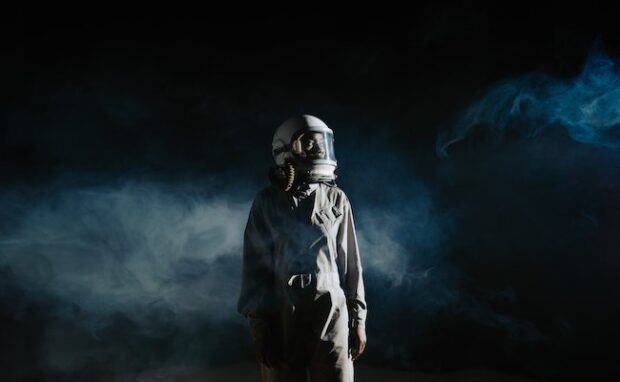Spacesuits may soon repel lunar dust
Hawai’i Pacific University researchers are developing a spacesuit to keep lunar dust away from astronauts. Space crews may turn on a mechanism inside their suits to emit an electric field that repels lunar particles. As a result, NASA experts may protect themselves and their equipment and stay on the Moon’s surface longer than ever.
We learned many things about the Moon after Neil Armstrong and the other pioneers stepped on the space rock. Years of rigorous study have enabled us to learn from previous space missions and launch more ambitious ones. In 2029, the Artemis mission may launch with new spacesuits, showing how much we’ve improved.
This article will discuss HPU’s upcoming electric field spacesuits. Later, I will discuss other projects aimed at helping crews stay longer on the Moon.
How does the HPU spacesuit work?

The HPU’s Daily News website reported that the university received a $50,000 grant from MUREP Partnership Annual Notification (MPLAN). Assistant Professor Arif Rahman used the funds to create LiqMEST, or Liquid Metal Electrostatic Protective Textile.
“The technology is designed to be stretchable, and when activated, it generates an electric field that repels lunar dust, preventing the dust from adhering to the LiqMEST fabric. This strategy can be applied both to spacesuits and fabric covers for lunar equipment during moon missions,” said Rahman.
The professor also explained where he got the inspiration to create the unique material. “During my research career, I have worked with liquid metals like gallium alloys, which have the unique capability to be turned on and off, allowing them to appear and disappear based on specific conditions,” the researcher said.
“I am well-acquainted with these dynamic properties. So, when I learned that NASA has a problem with lunar dust sticking to the surfaces and posing a significant threat to the equipment and to the astronauts, it occurred to me that liquid metals might offer a potential avenue for developing an electrostatic or electrodynamic shield to mitigate these issues with lunar dust.”
You may also like: NASA cameras take mosaic photos of the Moon
Despite its unassuming name, lunar dust poses significant risks to astronauts and their equipment. It consists of tiny rocks that can damage lunar landers, overheat radiators, harm lungs, and destroy spacesuits. Soon, Rahman will submit a full grant proposal to NASA for LiqMEST.
Space.com says NASA has been testing other fabrics besides the Hawai’i Pacific University project. The agency has been testing a fabric version of the International Space Station’s exterior called the MISSE.
The Materials International Space Station Experiment tests materials in harsh orbital conditions for months in a vacuum and with high solar radiation.
What are the other recent space exploration projects?

Hawai’i Pacific University isn’t the only group making next-gen NASA spacesuits. Believe it or not, luxury brand Prada is also developing one for the Artemis III mission:
“Prada’s technical expertise with raw materials, manufacturing techniques, and innovative design concepts will bring advanced technologies instrumental in ensuring not only the comfort of astronauts on the lunar surface but also the much-needed human factors considerations absent from legacy spacesuits.”
“Prada engineers will develop the all-important textile materials that insulate astronauts to an even higher standard than Apollo while taking into consideration more creature comforts not possible to apply 50 years ago.”
You may also like: Chinese lunar samples open new Moon insights
Construction technology company ICON took innovation to the next level by turning the lunar dust problem into a solution. The firm used it as concrete for its 3D printing home construction.
It will mix that lunar dust into concrete on site to print everything from habitats to rocket landing pads. Consequently, it could become a quick, low-cost solution for housing problems on Earth and the Moon.
ICON CEO Jason Ballard said, “It’s a surprisingly natural progression if you are asking about the ways additive construction and 3D printing can create a better future for humanity.” Soon, his company’s invention could enable humans to live on the Moon.
Conclusion
Hawai’i Pacific University experts are developing spacesuits that will repel lunar dust. Soon, the upcoming Artemis mission crew could use it to protect themselves from this harmful substance.
The LiqMEST project is undergoing further research and development at the time of writing. Eventually, the research team will request NASA to fund and use its spacesuits.
Learn more about the next-gen spacesuit on The ‘Ohana, HPU’s Daily News website. Learn more about the latest digital tips and trends at Inquirer Tech.